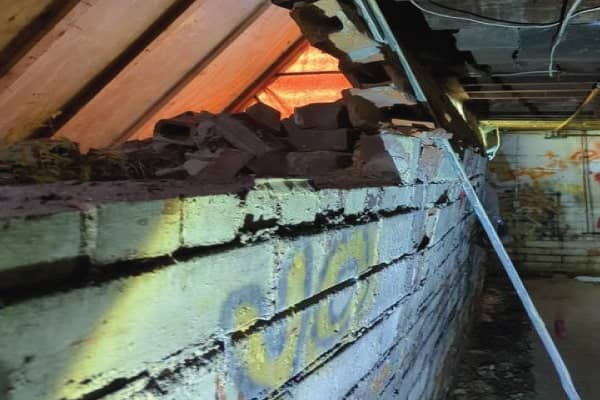The 5-Minute Rule for Best Basement Waterproofing
The 5-Minute Rule for Best Basement Waterproofing
Blog Article
Best Basement Waterproofing Things To Know Before You Get This
Table of ContentsThe Basic Principles Of Best Basement Waterproofing Rumored Buzz on Best Basement WaterproofingEverything about Best Basement WaterproofingThings about Best Basement WaterproofingThe 25-Second Trick For Best Basement Waterproofing
AdvantaClean's experienced experts and service technicians will certainly find the water source. If wall or piece cracks are present, we will infuse polyurethane and epoxies right into the splits and seal the concession, avoiding further wetness from getting in.
If there's condensation on the outside of the foil, you have high moisture in your cellar. If the aluminum foil has condensation on the within surface area (next to the wall surface), the dirt around your residence may be normally damp from a high water table or bad dirt water drainage.
You can waterproof simply your indoor wall surfaces, which may solve the problem. Or you can waterproof your exterior walls, which is a better bet but even more costly. Here's the inside story on the different kinds: These thick layers are cement-like. Once they dry, they stick completely to concrete and masonry walls (Best Basement Waterproofing).
The Buzz on Best Basement Waterproofing
Concrete waterproof coatings can not be used to previously painted surfaces; inspect the tag. Recognized as densifiers, they are suitable just for walls that haven't been painted or secured.
You brush, roll, or spray it on a lot even more thickly one gallon covers just 75 square feet, not the 300 square feet regular with standard paint. Waterproof paint is fine for DIY application. You can use it over painted surfaces, and paint over it once it's cured (one gallon prices $37).
It can cost $10,000 to $15,000, depending on the work needed. Exterior waterproofing includes excavating around the house to the full deepness of the structure walls, after that setting up a waterproof covering or membrane topped by drain panels. The panels give an easy path for water to move down to an external French drainpipe at the bottom of your foundation.
A cellar without waterproofing is kind of like that. Your basement doesn't want to go via a rainstorm without appropriate security simply as much my website as you don't desire to.
The Facts About Best Basement Waterproofing Uncovered
But if you have actually done your research study, you would certainly recognize there are two sorts of waterproofing: interior and exterior. It can obtain confusing what they both mean, which one's a far better investment, and what will actually keep the water out. Do not fret, we created this blog site to quickly specify both techniques for you and review the benefits and drawbacks of each.
Outside waterproofing is a waterproofing technique that includes sealing your home from the outside. The foundation walls are then cleaned up, sealed, and covered with a water resistant membrane or sealer.

Best Basement Waterproofing Things To Know Before You Buy
It's a much more involved procedure that calls for digging up your lawn, which is pricey and time-consuming. Outside waterproofing includes getting rid of everything surrounding your house, including patios, driveways, sidewalks, landscaping, AC systems, decks, and more. If any one of the work was done improperly and water is still entering your cellar, there isn't much you can do to fix or repair it.
Inside cellar waterproofing involves waterproofing from the inside. Any water that leakages check my source into your cellar is redirected before it touches your flooring. It's type of like site here using a raincoat under your garments. It entails 2 things: a water drain track and a sump pump. It works by securing the within of your cellar walls and floorings so water that tries to enter is channeled out via a sump pump.
It's an efficient method to water-proof your cellar - Best Basement Waterproofing. The drawback of indoor cellar waterproofing mainly has to do with the installment procedure. This technique needs stored items, furniture, and built-in shelving or cabinets to be moved from touching the basement wall surfaces. And throughout installment, your basement can not be used. The largest distinction between the two methods is this: Exterior waterproofing is a preventative solution and interior waterproofing is a corrective solution.
4 Easy Facts About Best Basement Waterproofing Described
In verdict, exterior and indoor basement waterproofing are both efficient methods of protecting your home from water damages. Outside waterproofing produces a barrier that stops water from entering your home, while indoor waterproofing redirects water that does enter your home. And it is very important to note that outside waterproofing is a pricey and turbulent installation process when compared to indoor waterproofing.
Whichever method you pick, see to it you pick a trustworthy and credible professional for the work. Both approaches need seasoned employees to manage the work. If you have any kind of questions concerning cellar waterproofing, please connect to us. And if you're in our service area and have water in your cellar, call us for a free, no-obligation home inspection.
You can load out our type here, begin a chat in the lower right-hand edge, or call us at 1-800-827-0702.
Report this page